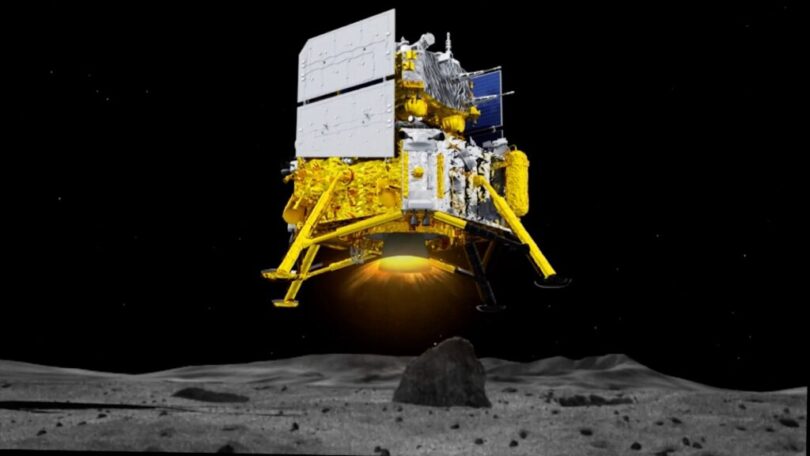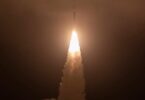BEIJING (APP): China’s Chang’e-6 probe landed on the far side of the moon on Sunday at 6:23 a.m. Beijing Time, aiming to collect samples from the South Pole-Aitken (SPA) Basin within two days, which will be brought back to Earth, according to the China National Space Administration (CNSA).
Supported by the Queqiao-2 relay satellite, the lander-ascender combination of the Chang’e-6 probe landed at the designated landing area in the SPA Basin. The mission has made technological breakthroughs, including lunar retrograde orbit design and control technology.
It will go on to complete key tasks such as the intelligent, rapid sampling from the lunar far side and lunar surface take-off, said the CNSA.
The probe of Chang’e-6, which is named after the Chinese moon goddess, consists of an orbiter, a returner, a lander and an ascender. Since its launch on May 3, it has gone through various stages such as Earth-moon transfer, near-moon braking, lunar orbiting and landing descent.
The lander-ascender combination separated from the orbiter-returner combination on May 30. Lunar landing The landing site of the Chang’e-6 is at an impact crater known as the Apollo Basin, located within the SPA Basin. The choice was made for the Apollo Basin’s potential value for scientific exploration, as well as the conditions of the landing area, including communication and telemetry conditions and the flatness of the terrain, said Huang Hao, a space expert from the China Aerospace Science and Technology Corporation (CASC).
At 6:09 a.m. on Sunday, the lander fired its 7,500-newton-thrust engine to slow down and began to descend from about 15 kilometers above the lunar surface. In this process, the cameras on the lander snapped pictures of the landing area and transmitted them to computers on the lander to identify possible hazards on the surface, such as large rocks, so that the craft could maneuver to avoid them.
At about 100 meters above the lunar surface, the combination suspended its descent and hovered for a moment to conduct accurate detection of smaller obstacles and determine the final landing spot before continuing to descend at a slower, steady speed, said the CNSA.
The Chang’e-6 probe faces a different terrain to the Chang’e-5 sample mission. To sample-retrieve from the lesser-known far side, the probe needs a relay satellite for communication and needs to be even more efficient and time-sensitive.
“Though the far side of the moon is more rugged, we can choose a relatively better place to land,” Lu Yuntong from the China Aerospace Science and Technology Corporation told CGTN. Sampling process Due to the moon’s obstruction, the Earth-moon communication window period on the far side of the moon, even with the help of the Queqiao-2 relay satellite service, is still shorter than that on the near side. Chang’e-6 is poised for a faster sampling process compared to its predecessor.
It’s expected to take roughly 14 hours, a significant reduction from the 22 hours required by Chang’e-5. About 1,000 instructions were sent during the entire sampling process of Chang’e-5, while for Chang’e-6, the number is expected to be reduced to about 400. As it is scheduled to complete sampling around two days after landing, Chang’e-6 has adopted two methods of moon sampling, which include using a drill to collect subsurface samples and grabbing samples on the surface with a robotic arm.
To guarantee a smooth sampling process on the moon, the Chang’e-6 probe development team, led by space expert Jin Shengyi from the CASC, built a meticulous simulation lab in advance. The lab replicates the lunar landing site, complete with environment, rock distribution and lunar soil conditions based on Chang’e-6’s exploration data. By meticulously simulating the environment, the team can develop and verify sampling strategies and equipment control procedures, ensuring the accuracy of instructions sent to the probe.
In a major leap for lunar exploration, Chang’e-6 boasts an intelligent sampling process. This allows the probe to autonomously execute instructions and make real-time decisions based on sensor data, reducing the need for constant communication with Earth. Essentially, Chang’e-6 can break down complex instructions into smaller actions, verify their success using on-board sensors, and adjust its approach as needed without waiting for further commands from mission control. This significantly streamlines the sampling process and minimizes delays caused by Earth-moon signal lag. APP/asg







